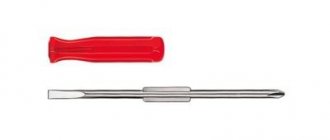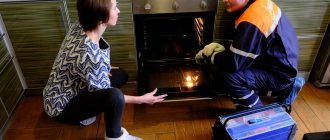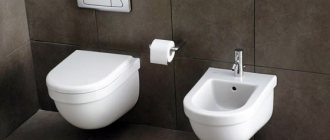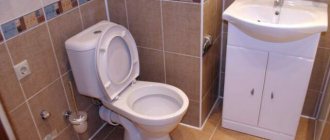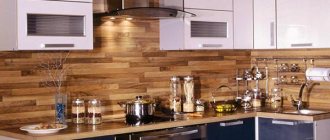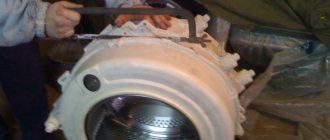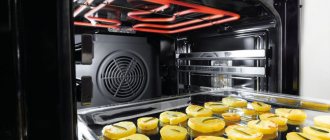Modern housewives who delight their families with healthy, tasty, baked dishes often use the oven for this. Today's ovens are very technologically advanced, one might even say smart. But no amount of equipment, even the most cutting-edge, will protect the innovative device from breakdowns and mechanical damage. Many owners of current ovens are faced with such a popular problem as the door not fitting tightly to the body of the device. This seemingly minor problem can later lead to serious problems with equipment, because hot air escapes, disrupting the heat distribution mode inside the unit. The quality of the prepared dish, its appearance and taste characteristics depend on the above. Everyone knows that in order for a sponge cake to turn out beautiful and “airy”, it is necessary that there are no sudden temperature changes inside the oven. And if the flap does not close or the door opens over time, the cake will not be tall and “lush.” The door of a properly functioning oven should fit snugly against its contour. If this does not happen, then hot air escapes during cooking. And this can lead to the fact that the facades of the furniture next to the oven will be damaged by steam.
Reasons for the oven door not closing completely
The problem of a non-closing sash can be caused by a number of reasons:
- The door has loose or initially had weak fastenings (curtains).
- The closing/opening mechanism has failed.
- The sash contour is heavily contaminated with grease and food particles.
- The door seal is worn.
- Mechanical damage directly to the device door itself.
Don't solve the problem yourself, call a specialist
If you encounter a problem with the door not closing completely, you can contact the Mastersbyt oven repair service to troubleshoot the problem. When a technician arrives at your home, he will check the integrity and operational properties of the mechanisms that allow the door to open and close. Most likely, the sash will have to be disassembled and thoroughly cleaned of any debris, grease or food debris that has gotten inside. The oven doors have a seal around the perimeter that allows the door to fit tightly to the contour of the stove and which tends to deform and fall apart over time.
The specialists of our service center will cope with all these and other tasks with light hand movements. All of the above steps will be performed by a professional tool. If the equipment needs to replace components, our staff uses only original spare parts so as not to disturb the appearance of the device. In addition, eliminating such a common problem will not cost you a pretty penny, but will be quite inexpensive. The work will be done quickly, diligently and efficiently. You can learn in detail and thoroughly about the repair of various household appliances on this page.
Find out the conditions for preferential repairs and the amount of your discount
You can get acquainted with all the details of repairing your household appliances, the cost of services, as well as ongoing promotions, current discounts, and preferential offers on our main page.
Over the years, we have accumulated extensive experience in the field of repairing household appliances. MasterByt is a high quality of service provision and responsibility to our clients! Trust your equipment to professionals!
If the door of the electric stove does not close or does not lock and hold, then the reason may be either a breakdown of the locking mechanism or simple inattention. In any case, if problems arise with the door, we advise you not to experiment, but first read the material on this page. Most of the reasons that prevent the door from closing can be eliminated yourself, but it is better for a specialist to repair and adjust, for example, hinges.
When your oven door won't close, we strongly advise against doing the following to close the stubborn door:
- resort to brute force
- loosen, pull the door
- disassemble hinges
Control panel malfunctions
One of the most important parts of a modern Smart cooker is the control panel. It controls the cooking process automatically
, helping the housewife save her time. Failure of settings on the control board is a fairly rare problem, but sometimes it does occur. Self-repair is a complex process of diagnosing and configuring each element of the system.
As a rule, in such cases they rarely purchase a broken link and resort to simple repairs. The cost of purchasing new equipment is significantly higher than the cost of repairing it. If your stove is subject to repair, there is no point in overpaying extra money.
With proper care, an electric oven can last for several decades. However, even for an ideal housewife, electrical appliances sometimes stop working. There can be many reasons. We will now talk about what to do if the oven in an electric stove does not work.
Worn door hinges
Symptoms: the door feels a little loose to the touch
Over time, the door hinges wear out and are no longer able to hold the heavy oven door tightly against the frame. You can adjust the hinges using a regular screwdriver, but heavily worn hinges must be replaced. It should be taken into account that the door hinges are attached to the stove body itself, often with rivets: to replace the hinges yourself, you will have to almost completely disassemble the stove, so we recommend entrusting this work to a knowledgeable specialist.
The springs that tightly close the door may also weaken or break: you can try to tighten the springs, but the broken ones will have to be replaced.
The seal is worn out
Symptoms: in some places the seal is hard to the touch
Over time, rubber parts can wear out and harden, and the hardened parts of the seal will prevent the door from closing tightly. Such a seal can only be replaced, and it is better not to delay it, since the hot air escaping from the oven can damage other components of the stove or surrounding furniture.
Symptoms: you have to make an effort to close the door tightly
Over the course of long-term use, the seal may sometimes jump out of its original place, and this will prevent the door from closing tightly. You can easily correct it yourself: carefully insert the displaced parts of the seal into a special groove.
The door is locked
Symptoms: Oven door won't open
First, you need to understand the reasons for the blocking: perhaps you yourself turned on the child lock or started the oven’s self-cleaning process - in the latter case, it is blocked until the end of the procedure.
To remove the blockage, it is usually enough to disconnect the stove from the power supply for 30-60 seconds. But modern stoves are so complex that you often need to follow a certain procedure to unlock the oven door - refer to the instructions.
The door may not open due to a breakdown of the lock or control module: in this case, you will have to call a technician.
Any household appliance breaks down periodically. Kitchen stoves did not escape this fate due to constant use. Problems with the oven door especially often arise, and most door breakdowns can be fixed with your own hands. The article describes in detail how to identify a breakdown, what are the causes of a breakdown, how to repair a part with your own hands, as well as expert advice and information on precautionary measures.
Why does the oven door glass break?
Manufacturing defect.
A manufacturing defect or shock during transportation of the oven may cause glass to explode in the oven. For example, the glass used to make a door panel may have a manufacturing defect due to its special processing. Likewise, the oven could have been subjected to microshocks during transportation or during operation. Glass is indeed a brittle material that, after small, repeated impacts, can become deformed as the temperature rises. In this case, as a rule, the glass may explode the first time you use the pyrolysis function. This may happen later... We recommend being careful when using this oven cleaning for the first time and not remaining in the kitchen during the cycle. But again, this happens very rarely.
Useful information Glass is a material with memory. This means that when it receives a shock, it does not necessarily react immediately: it remembers the shock and may break later during normal use. The glass used for the oven door panel is considered tempered, meaning it has undergone a special treatment to cool quickly, making it more durable. First of all, it prevents the glass from breaking into a thousand pieces: the glass shards remain stuck together and fall straight away without breaking apart. This system is also used on car windshields to prevent broken glass from reaching passengers. Therefore, the risk of injury is very low, but not impossible.
Main symptoms of a malfunction
Any breakdown leads to the fact that the door no longer holds, locks or closes normally. The reasons for such malfunctions are different, but first it’s worth listing all the visible signs of the need for repairs:
- The door fits obliquely to the stove itself. This is a fairly rare case, but sometimes it happens that the door and even the stove itself can become warped if it is standing on an uneven surface. The curved one will have to be replaced, but the legs of the stove can be adjusted in height.
- Dangles or “walks” too freely. This occurs due to wear and tear on the hinges that hold the door in place. The screws on the hinges can be tightened with a regular screwdriver. Sometimes you have to take it apart to replace the hinges with new ones. The hinge device has springs that need to be tightened or replaced.
- It closes normally, but does not lock. The sign applies only to those slabs on which a locking lock is installed. If it wears out or breaks, you will have to install a new locking device.
- It closes poorly, and dirt is visible on its borders and the body of the stove. A trivial reason, but housewives rarely pay attention to the cleanliness of the area adjacent to the oven. The stove just needs to be thoroughly cleaned and washed.
- The rubber seal was deformed or roughened in some places. The rubber also wears out, and any roughness in the seal will result in the door not fitting tightly enough to the body. This seal will have to be replaced. The oven will close like new.
- The door has to be closed with force. The reason for this may also be the seal, which often jumps out of the special groove. You need to place the rubber gasket back into the gutter and make sure that it is securely fixed in place.
- You cannot close the door tightly because something is preventing it. If all the parts of the oven and the door are in order, then it is worth inspecting the seal. Perhaps some hard object accidentally fell inside it, which prevents a normal fit.
- Does not open. This sometimes happens on expensive multifunctional stoves. For example, the oven is blocked if you activate the child lock or set it to self-cleaning. Usually the door can be unlocked, but sometimes you have to follow a complex sequence of actions specified in the instructions for the stove.
Oven cleaning
Once a year, before the start of the heating season, the stoves need to be cleaned through special openings closed with bricks (without dressing) or small doors. Using a poker, soot and fly ash particles are removed through these holes. If possible, it is good to scrape the inner walls of the stove with a poker.
With proper combustion, virtually no soot is formed, and the furnace becomes clogged only with fly ash. But for prevention, it is useful to periodically heat the stove with aspen wood. Or, in an already heated oven, make the last load of firewood from aspen. Aspen and alder help burn out soot.
Compliance with these rules will save you time and firewood, and improve the local environmental situation.
Possible causes of failure
A broken oven door is a common problem.
Many reasons were discussed above when describing the visible signs of failure. The main reason is incorrect or careless operation.
- Sometimes heavy dishes are temporarily placed on an open door and children sit on it, which leads to excessive stress on the hinges and brackets. Deformed parts must be replaced.
- Problems sometimes arise due to loose fasteners or defects in the rubber seal. The fasteners can be tightened and the gasket replaced. On some stove models, you have to remove the door from its hinges to replace the seal.
- Sometimes repairs are necessary due to problems with the glass. It may crack or burst. Causes:
- manufacturing defects;
- damage during transportation and installation of the slab;
- temperature difference (heated oven and drops of cold water falling outside).
This leads to the formation of microscopic cracks; over time, the glass wears out more and more, and at a certain point it may finally crack.
How to fix a problem with a gas or electric stove with your own hands?
Below are instructions for removing the door, dismantling the hinges and restoring the stove to its previous condition. The recommendations will be useful in case of serious problems with the door itself, glass or hinges.
Required Tools
For each specific case you will need different tools, but the general list will look like this:
- Phillips and regular screwdrivers;
- pliers;
- hammer;
- adhesive sealant for installing new glass;
- thick mittens or rubber gloves (depending on the type of breakdown).
Many plates are designed so that the door can be removed without tools, but tools may be necessary to repair other parts.
Removing the door and glass
Steps to remove the door from the oven:
- Open the door.
- Find the loops on the sides. Depending on the design of the slabs, they need to be bent or lifted and moved towards you.
- Smoothly pull horizontally towards you, and then vertically upward - it should detach from the body.
- Place the removed door on a flat and soft surface so as not to damage the glass. Please note that the door is heavy.
On some slab models, you must first remove the side parapets. You must open the hinged clamp lever and then close the door until it locks the hinges. Then it is removed, the sides are removed and access is gained to the brackets that hold the door against the slab.
The door can be disassembled to release the glass, but this will be discussed later.
In the oven clamping mechanism, you need to carefully inspect all the hinges and brackets (they can be easily unscrewed or removed from the body, but on some stoves you will have to remove the side walls of the oven). If any curvature is visually noticeable, you can try to carefully straighten the part with a hammer and pliers. If your actions do not bring results or the part is broken beyond repair, install a new bracket for your stove model.
Deciding on culinary functionality
Most modern ovens are multifunctional devices. What your oven can do determines how much you can realize your culinary potential.
Heating modes
Cooking different foods requires different temperatures and different heating rates. It follows from this that the more heating modes an oven has, the more varied the list of dishes that you can cook in it will be, the more opportunities you will have for various culinary experiments. Budget electric ovens, as a rule, have top, bottom and combined (top + bottom) heating, as well as a grill mode.
In more expensive models, convection modes are added to the classic heating modes. On the back wall of such ovens there is a fan around which a ring heating element is placed. The fan promotes rapid and uniform distribution of heated air throughout the working chamber.
Additional modes
Electronically controlled ovens often have a number of additional modes that significantly expand the functionality of the device. The presence of a convection fan allows you to implement a gentle defrosting mode of food: the heating elements do not turn on in this mode, and the fan circulates air at room temperature throughout the chamber. The “Stewing” and “Simmering” programs are designed for slow cooking of products at relatively low temperatures, which helps to maximize the preservation of nutrients in them. The “Fermentation” mode can be used to prepare yogurt at home, rise yeast dough, etc.
Steamer function
Some modern oven models have a steam mode. In most cases, this is not steaming, but rather a symbiosis of steam and heat treatment of products. However, there are ovens on sale with a special steam generator design - these can be used as classic steamers.
Microwave module
An electric oven can be equipped with a built-in microwave module. As a result, you get two appliances in one, which can be used as both an oven and a microwave. Moreover, if you wish, you can combine conventional heating with microwave heating, which can significantly reduce cooking time.
Automatic programs
Automatic programs built into the memory of an electronically controlled oven will help to significantly simplify the process of preparing various dishes. The user just needs to indicate the type of product (meat, fish, vegetables, etc.), select one of the types of dishes offered to him to choose from that can be prepared from this product, and enter the weight of the product.
Then the oven operates on its own: based on the algorithms stored in its memory, it selects the temperature mode and determines the process time, and after some time you get a ready-made dinner. The number of preinstalled automatic programs varies from model to model, but can reach several dozen. Some modern premium ovens allow the user to update the software by loading new auto programs in addition to existing ones, as well as save their own cooking algorithms.
Skewer
If you often bake whole poultry or large pieces of meat as the main course of a holiday dinner, a spit will come in handy. A spit rotating from a specially designed electric drive will help to heat the product evenly, making your signature dish even more tasty and attractive.
However, if your oven has a convection heating mode, then you can refuse the grill. A fan will also do an excellent job of its function: in this case, it is not the food that will rotate in the hot air, but the hot air around the food - the effect will be the same, which means that the meat on the grill will be cooked no worse than on a spit.
Temperature probe
When baking large pieces of meat, it can be difficult to assess how much the temperature inside the piece differs from the air temperature in the cooking chamber, and therefore to make an assumption about the degree of readiness of the product. A temperature probe will come to your aid - a thermometer that measures the temperature inside the product being prepared. When the required temperature is reached, the temperature probe will “notify” the control system about this, and it, in turn, will notify the user about this or perform an automatic shutdown.
Precautionary measures
Do-it-yourself repairs can be difficult, so you need to adhere to the following recommendations:
- Carefully remove the door. It is heavy, so it is better to remove it with two people.
- Handle the removed glass carefully as it may slip out of your hands.
- Be careful with fasteners and brackets, as they can be damaged if not handled correctly.
- Do not use powders or strong chemicals to clean glass.
- Wear thick gloves when working with glass, and rubber gloves when cleaning.
Expert advice
On some slab models, the glass is glued to the sealant. In such situations, the glass is removed if its integrity is damaged. You will have to clean it along with the door itself. Of course, such a door can also be disassembled and new glass glued, but this requires special glue intended for repairing household appliances.
When replacing an old seal, you need to clean the groove in which it was located, and only then insert a new rubber gasket.
In order for the stove to serve you as long as possible, it must be used carefully. Do not open the oven forcibly. After each preparation of food, it should be washed without waiting for a large accumulation of debris.
Housewives often complain about problems with the oven door: for some reason it does not close well, which interferes with the normal operation of the stove and high-quality cooking. Most problems can be fixed on your own, even if you have to remove the door and disassemble its fastenings.
OUR SITE RECOMMENDS:
Windows power shell what is it
15.12.20190
Contents1 What is Windows PowerShell2 How to run a program...
The sound on the laptop has become quieter
15.12.20190
Contents1 Adjusting the volume2 Checking and updating drivers3 Operation...
Soundproofing the riser in the toilet
15.12.20190
Contents1 Why sound insulation is done2 Methods of sound insulation3 Conclusion4 ...
There is sound but no image on the computer
15.12.20190
Contents0.1 There is sound, but the video does not show in...
The last notes
How to recover Instagram page without email
15.12.2019 0
How to restore a VK page without a last name
15.12.2019 0
How to restore a VK page if the number is lost
15.12.2019 0
How to restore a column in Excel
15.12.2019 0
Additional Information
It is not prohibited to use classic household methods, such as soda, vinegar, citric acid or alcohol.
To clean a gas oven, you can use store-bought and folk cleaning products.
Use a regular foam sponge, or a soft washcloth or cloth. Apply products only with a creamy consistency, distributing them evenly over the enamel. To completely remove adhered grease and stains, leave for 1-2 hours so that the product removes all dirt and germs from the surface of the gas stove. Next, remove the burners and soak them together with the cleaning agent in water for 1-2 hours.
Afterwards, rinse everything off with a damp sponge, wipe with a cloth and replace the dry burners.
Please note: Follow safety precautions when using the stove and do not panic if you smell gas. Just turn off the gas pipe valve and try to stay out of the apartment until specialists arrive.
Adviсe:
- Do not turn the gas knobs to full power, as if the gas supply is too powerful, the flame may come off the burner, thereby releasing carbon monoxide into the air.
- Do not leave a switched on gas stove unattended.
- Monitor the quality of the equipment; if you see a yellow flame, the oven in the gas stove does not burn, or any other problems arise, call specialists in a timely manner.
- Do not allow liquid to splash onto the surface of the stove, as this may extinguish the fire and cause a gas leak.
- Check your gas water heater.
- Pay attention to whether the hood is working. It is very simple to determine this; you need to bring a burning match to the chimney, hold it for a while, if the flame is drawn in, it means the hood is working properly. If the flame burns as usual or deviates to the side, then the water heater cannot be used.
It is necessary to periodically monitor the operation of the oven.
See also: How to decorate heating pipes?
